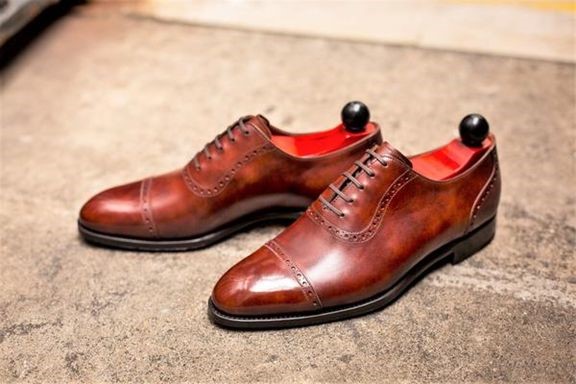Not counting the boots, leather shoes generally are divided into four categories, Oxford, Derby, Monk and Loafer. In these four model, I personally like Oxford the most.
There are also many styles in Oxford, but very few people talk about these subcategories. I will use a few brands to give an example. On the one hand, I will say what I like best and what I don’t like and why, on the other hand, you can also have more understanding of Oxford styles to facilitate your own choice.
Cap Toe
This can be said to be the most familiar style in Oxford, as to whether it is the oldest, I’m not so sure.

Personally, I like the Cap Toe, but have a very clear preference for the line that divides it. The Carlos Santos pair above is divided by two distant stitching lines.

Then this pair of J.FitzPatrick Magnolia uses three tightly parallel stitches to form the cap toe line.

Sons of Henrey uses brogue to achieve this. Brogue cap toe also have different types. The above pair has holes punched directly on the leather, which means it is not a real leather connection, but immitation.
The real Brogue cap toe looks like this.
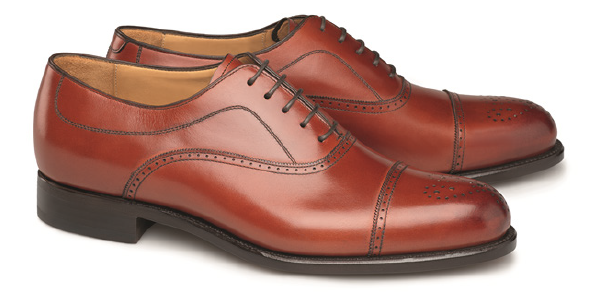
This is the real brogue cap toe with the perforated holes are actually on the front piece.
In these four examples, I like the middle two. I hate one feature which is loved by many which is reverse stitched.

It is the leather of the toe seems to be a little inverse then, and then press the leather of the instep piece. No matter what brand it is and how much it costs, they are low.
Adelaide

This style is actually extremely classic, the biggest feature is the U shape formed by brogue in quarter. This is my favorite oxford style.
Strictly speaking, the front must also be a joint, and the joint must be Brogue.

How to be innovative on Adelaide Oxford?
First of all, brogue at quarter can goes all the way to heel or it can stop somewhere.
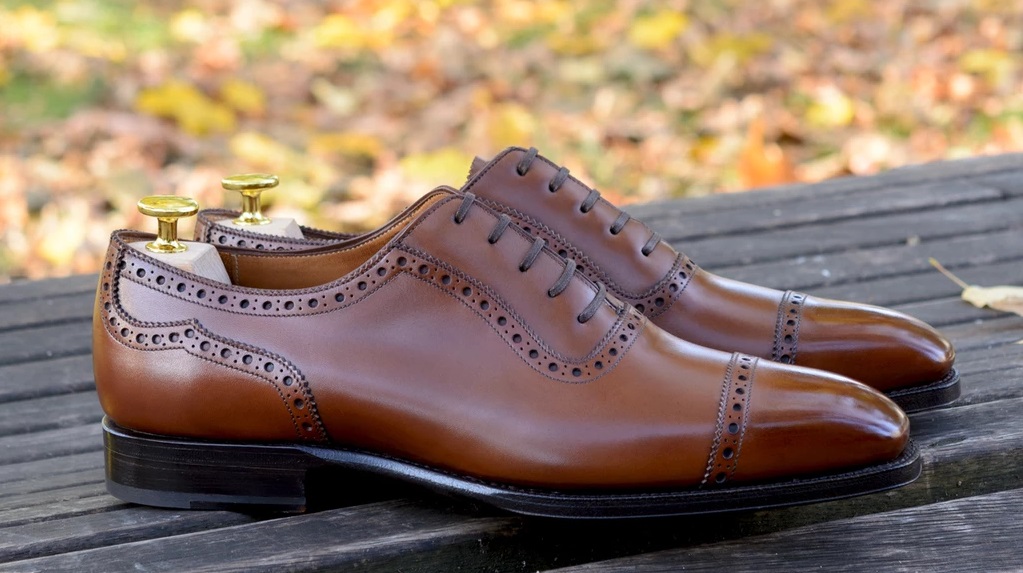
Another one is whether the toe of the shoe has Medallion.
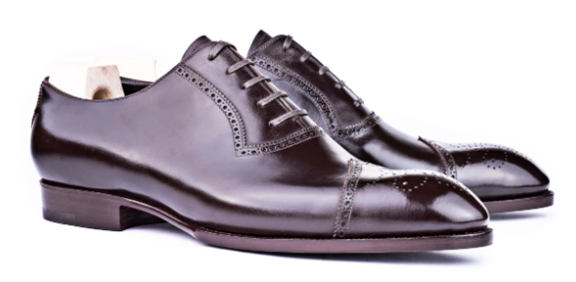
The last is the bottom of that circle, how the shape of the T-shaped formation.
Wingtip

This is the Oxford that I personally don’t like, which means I won’t go for the style. The main reason is that this element, whether it is the minimalist pair above, or full brogue makes me feel mismatch with Oxford.


This pair of J.FitzPatrick has done a beautiful job, but if I were to buy Oxford, I would still choose the former models.
Wholecut
The most Dandy Oxford, after the first launch of Berluti, winding up in the world.

I have several pairs of Wholecut, because the first was France, so most of the brands that follow, still keep the French style, that is, the slender last.
Personally, I don’t like wide foot lasts, but I can’t stand the French slimmer ones even more. In this regard, I appreciate Carlos Santos’ Wholecut with a round toe wide last.
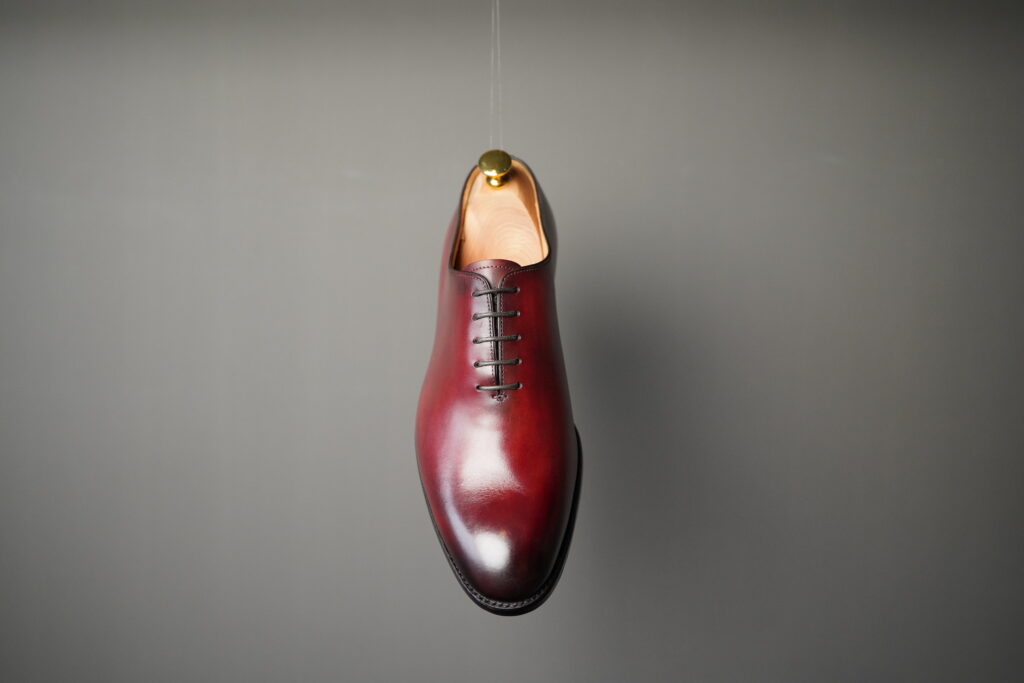
For me, if I were to buy Wholecut, I would go for this more conservative ones. Overall, it’s a style that I wouldn’t be interested in after trying it.
Plain Toe
This is the style I think I see the most mistakes, in fact Wholecut is definitely Plain Toe, where the word is sort of corresponding with Cap Toe and Wingtip.

Giving people the feeling of naive yet not elegant.

This pair can be said to be a modification of the Adelaide, and by clashing colors, the sight is drawn on lace area, and then with Medallion beautification, which is considered a rare pair of beautiful Plain Toe Oxford. I always feel Justin is so good at aesthetics.
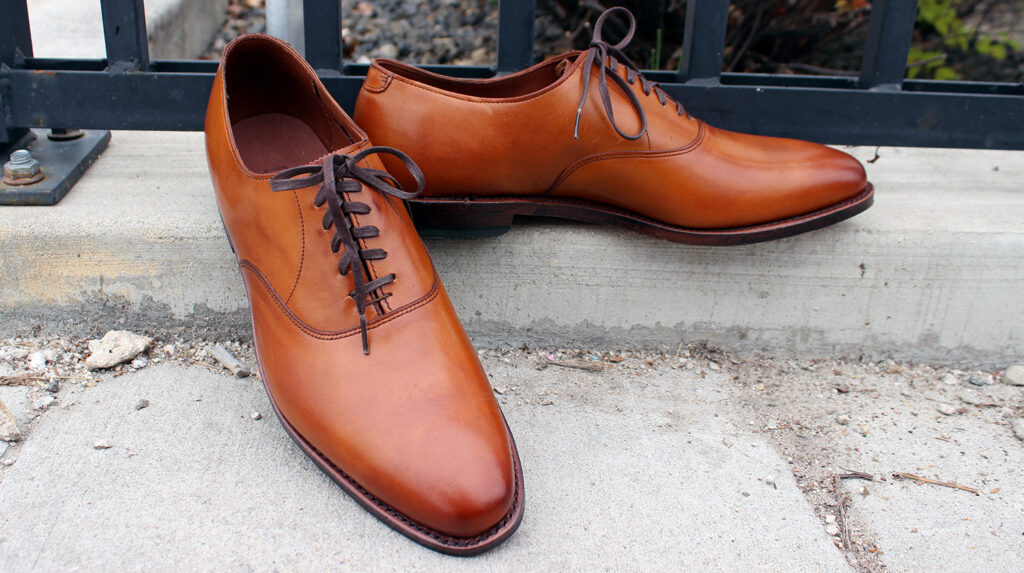
A Plain Toe that is not explicitly debossed I think is not Plain, but silly.
Balmoral
We all know that in the beginning, people wore boots, and leather shoes were a lower ankle version of boots. The ancestor of the Oxford boot, is the Balmoral boots. the Balmoral style in the Oxford is characterized by a line in the lace area that runs parallel to the heel. Orthodoxly speaking, it is also the Cap Toe.

The one above is a classic demonstration, and the so standard model is not often seen nowadays.

This front became Plain Toe, and the lace area was made of suede.
Balmoral is also a very orthodox and classic style, but I’m not very interested.
Summary
In fact, the above classification has overlaps, because Wholecut, Cap Toe, Wingtip and Plain Toe are very broad categories, while Adelaide and Balmoral are considered very specific style requirements. But everyone understands that there are so many things to say in Oxford alone.
Adelaide is my favorite, how about you?

